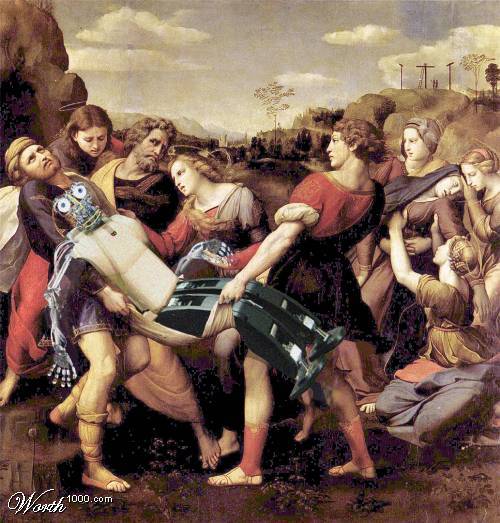With each passing year, I discover an incredible overlap between bellydance and geekitude. This pleaseth me greatly. :) So I am confident that a large cross section of you who visit this blog will appreciate the following video. It was sent to me via various methods earlier this year, and I have had it stuck in my head and heart ever since. It's autotuned Carl Sagan (feat. Stephen Hawking, even!), so for those of you not interested in either (autotuned music or science), you may not enjoy it much. But it made me cry when I first heard it and it still moves me incredibly every time I listen.
I grew up watching Cosmos with my family at home, and later on VHS in science class. Carl Sagan is at the top of my "if you could have dinner with anyone, living or dead, who would it be?" His combination of genius level intelligence, eloquent speaking skills, practical spirituality, childlike wonder, wry humor, respect for life, and passionate desire to understand that which is not yet understood is, to me, an incredibly evolved state of being which Mr. Sagan exemplified in his life* and work. This song is a lovely tribute to the man and his philosophies.
And while we're at it, you need to read "The Demon-Haunted World: Science as a Candle in the Dark" by Carl Sagan. An incredible read by one of the greatest thinkers in human history. http://www.amazon.com/Demon-Haunted-World-Science-Candle-Dark/dp/0345409469
(* To be clear, Sagan was still HUMAN, and I am aware of his personal relationship issues with his wives and family, but I am speaking of the public figure and his admirable qualities. I should hope I am more judged on the good I do publicly than the way I fuck up in private. :)
I grew up watching Cosmos with my family at home, and later on VHS in science class. Carl Sagan is at the top of my "if you could have dinner with anyone, living or dead, who would it be?" His combination of genius level intelligence, eloquent speaking skills, practical spirituality, childlike wonder, wry humor, respect for life, and passionate desire to understand that which is not yet understood is, to me, an incredibly evolved state of being which Mr. Sagan exemplified in his life* and work. This song is a lovely tribute to the man and his philosophies.
And while we're at it, you need to read "The Demon-Haunted World: Science as a Candle in the Dark" by Carl Sagan. An incredible read by one of the greatest thinkers in human history. http://www.amazon.com/Demon-Haunted-World-Science-Candle-Dark/dp/0345409469
(* To be clear, Sagan was still HUMAN, and I am aware of his personal relationship issues with his wives and family, but I am speaking of the public figure and his admirable qualities. I should hope I am more judged on the good I do publicly than the way I fuck up in private. :)












